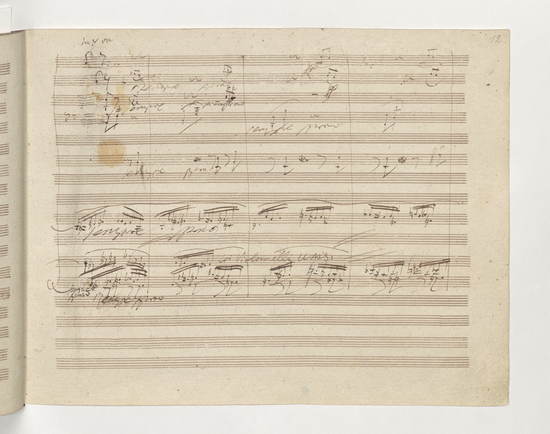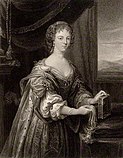Wikipedia:Main Page/Day after tomorrow
From the day after tomorrow's featured article
Anna Blackburne (1726–1793) was an English botanist and collector. She was born at Orford Hall in Lancashire into a family of landowners and after her mother's death she remained there with her father, John Blackburne, who had hothouses for exotic plants and an extensive library. Blackburne taught herself Latin so she could read the Systema Naturae of Carl Linnaeus, and created a natural history museum where she collected insects, shells, minerals and birds. She knew the naturalist Johann Reinhold Forster, who instructed her in entomology, and corresponded with other naturalists including Linnaeus. Her brother Ashton, who lived in New York, sent her specimens of North American birds, which were described by the naturalist Thomas Pennant in his Arctic Zoology. After her father's death, Blackburne and her museum moved to nearby Fairfield Hall. After her death, her nephew John Blackburne inherited her collection. Several species are named for her, including the Blackburnian warbler. (Full article...)
Did you know ...
- ... that new employees of a business headquartered in the Editors Building (pictured) chose their office decorations from a 7,000-piece collection of historic memorabilia of Washington, D.C.?
- ... that the fossil insect Allenbya holmesae was named after its finder's mother's maiden name?
- ... that Eric Sievers helped the San Diego Chargers set an NFL record for receptions by tight ends on a team?
- ... that the literary magazine Adabijoti Soveti was the sole remaining publication in the Jewish-Bukharian language by the time of the switch to the Cyrillic script in 1939–1940?
- ... that Charlize Mörz became the first Austrian female gymnast to win a gold medal in the FIG World Cup series in 2024?
- ... that the 2023 drama film Fly Me to the Moon was Sasha Chuk's debut as a director, screenwriter and lead actress, making it her first feature film in all three categories?
- ... that with the appointment of Michael Martin as Bishop of Charlotte, the Conventual Franciscans are now the most represented religious order among American Catholic bishops?
- ... that in 1990, Simon Rimmer bought an existing vegetarian restaurant with his business partner and taught himself to cook – in that order?
- ... that the perpetrator of the 2017 Aztec High School shooting had previously been investigated by the FBI, but the investigation was closed after he convinced them that he was simply "trolling"?
In the news (For today)
- In horse racing, Mystik Dan wins the Kentucky Derby.
- Following the Solomon Islands general election, Jeremiah Manele (pictured) becomes the prime minister.
- Acting prime minister of Haiti Ariel Henry resigns, and the Transitional Presidential Council is sworn in.
- NASA announces that the Voyager 1 space probe is sending readable data for the first time in five months.
- The HDZ-led coalition wins the most seats in the Croatian parliamentary election but falls short of a majority.
In two days
May 8: Anniversary of the birth of Miguel Hidalgo in Mexico (1753); Victory in Europe Day (1945)
- 1643 – First English Civil War: The first siege of Wardour Castle ended after six days with the surrender of the Royalist garrison under Lady Blanche Arundell (pictured).
- 1842 – A train derailed and caught fire near Versailles, France, killing at least 52 people.
- 1945 – A parade in Sétif, French Algeria, celebrating the end of World War II in Europe became a riot and was followed by reprisals, carried out by colonial authorities over the following weeks, that killed thousands.
- 1963 – In Huế, South Vietnam, soldiers opened fire into a crowd of Buddhists protesting against a government ban on the flying of the Buddhist flag on Phật Đản, killing nine and sparking the Buddhist crisis.
- 1972 – Four members of Black September hijacked Sabena Flight 571 to demand the release of 315 Palestinians convicted on terrorism charges.
- Thomas Drury (b. 1551)
- Helena Blavatsky (d. 1891)
- Beatrice Worsley (d. 1972)
Featured picture (Check back later for the day after tomorrow's.)

|
|
The Symphony No. 9 in D minor, Op. 125, is a choral symphony, the final complete symphony by Ludwig van Beethoven, composed between 1822 and 1824. It was first performed in Vienna on 7 May 1824. The symphony is regarded by many critics and musicologists as a masterpiece of Western classical music. It is one of the best-known works in common practice music and one of the most frequently performed symphonies worldwide. Symphony No. 9 was the first example of a major composer scoring vocal parts in a symphony. In the 20th century, an instrumental arrangement of the chorus was adopted by the Council of Europe, and later the European Union, as the Anthem of Europe. This photograph displays page 12 of Beethoven's original manuscript, which is currently held in the collection of the Berlin State Library. Manuscript credit: Ludwig van Beethoven
Recently featured:
|
Other areas of Wikipedia
- Community portal – The central hub for editors, with resources, links, tasks, and announcements.
- Village pump – Forum for discussions about Wikipedia itself, including policies and technical issues.
- Site news – Sources of news about Wikipedia and the broader Wikimedia movement.
- Teahouse – Ask basic questions about using or editing Wikipedia.
- Help desk – Ask questions about using or editing Wikipedia.
- Reference desk – Ask research questions about encyclopedic topics.
- Content portals – A unique way to navigate the encyclopedia.
Wikipedia's sister projects
Wikipedia is written by volunteer editors and hosted by the Wikimedia Foundation, a non-profit organization that also hosts a range of other volunteer projects:
-
Commons
Free media repository -
MediaWiki
Wiki software development -
Meta-Wiki
Wikimedia project coordination -
Wikibooks
Free textbooks and manuals -
Wikidata
Free knowledge base -
Wikinews
Free-content news -
Wikiquote
Collection of quotations -
Wikisource
Free-content library -
Wikispecies
Directory of species -
Wikiversity
Free learning tools -
Wikivoyage
Free travel guide -
Wiktionary
Dictionary and thesaurus
Wikipedia languages
This Wikipedia is written in English. Many other Wikipedias are available; some of the largest are listed below.
-
1,000,000+ articles
-
250,000+ articles
-
50,000+ articles




